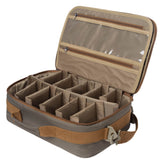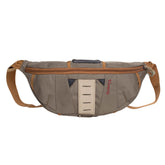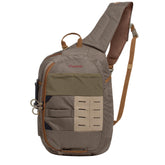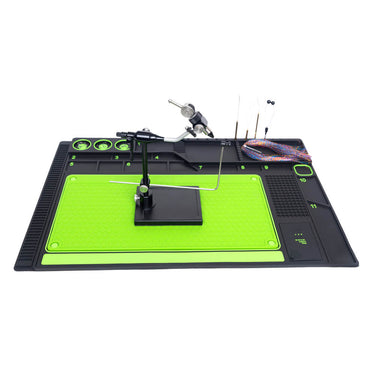Fly Line: Key Considerations for Skagit Fishing Techniques
Understanding the intricacies of Skagit fly lines can significantly enhance your fishing experience. Knowing the right grain weight for your Skagit line is crucial for achieving optimal performance on the water. This post will cover the best running lines for Skagit fly fishing, how to effectively match a Skagit head to a sink tip, and the most suitable leaders for your setup.

As I navigate the nuances of Skagit casting, I've discovered that the right combination of line and leader can make all the difference in both technique and success. From experienced anglers to newcomers, choosing the right gear aligned with your fishing style is essential for maximizing your time on the water. Join me as we explore each aspect of Skagit fly fishing gear, ensuring you're well-equipped for your next outing.
Skagit Fly Line Basics
Skagit fly lines are essential for efficient casting and fishing, especially in rivers with strong currents. Understanding the components and specifications of these lines helps in optimizing your equipment for successful outings.
Understanding Skagit Line Grain Weight
Grain weight is crucial when selecting a Skagit line. It refers to the weight of the line per unit length, usually measured in grains. For example, a line with a weight of 450 grains means that 450 grains are distributed across 100 feet of line.
When choosing a Skagit line, the grain weight must match the rod’s specifications. A line that is too heavy can overload the rod, while a line that is too light may fail to load it effectively. I typically opt for a weight that generally matches the rod’s rating, ensuring smooth casts and better line control.
Components of Skagit Fly Lines
A Skagit fly line consists of several key components: the body, the running line, and the shooting head.
-
Shooting Heads: These are short, heavy sections of line that are designed to load the rod quickly. They are typically used for casting larger flies and sinking tips.
-
Running Line: This is the thinner, lighter section that follows the shooting head. It allows for greater shooting distance once the cast is made.
When selecting a line, I prioritize compatibility between the shooting head and running line. A well-matched setup enhances my casting distance and presentation accuracy, especially in varied water conditions. Properly balancing these components ensures effective line management and improves my fishing experience.
Optimizing Skagit Setups
To maximize effectiveness when using Skagit setups, I focus on finding the right combination of Skagit heads, sink tips, and running lines. The following subsections highlight essential details for achieving optimal performance on the water.
Matching Skagit Heads to Sink Tips
When matching Skagit heads to sink tips, I consider the total grain weight and the intended depth. A general guideline is to select sink tips that are roughly 80-100 grains heavier than the Skagit head. This helps ensure optimal turnover and depth control.
For example, if I use a 540-grain Skagit head, I might choose a sink tip in the range of 620-640 grains. Tip lengths also matter; I typically use shorter tips (10-15 feet) for less water resistance. Add-on weights can be crucial for achieving the desired sink rate. I often experiment with different combinations until I find the perfect balance.
Selecting the Best Running Lines
Selecting the right running line can dramatically affect my casting distance and control. I often prefer a floating running line as it provides better mending capabilities and reduces drag.
Key characteristics I look for include diameter (typically 0.025” to 0.030”) and material: PVC lines are common, but I sometimes opt for monofilament for increased sensitivity. The line’s memory is another essential factor, affecting how well it straightens out after being coiled.
A good choice can be a high-visibility color to aid in tracking during casts. I prioritize a running line that balances durability and slickness for ease of shooting heads. Testing different combinations is vital for my comfort and effectiveness on the water.
Advanced Skagit Line Considerations

When engaging in advanced Skagit fishing techniques, several specific elements demand attention. Choosing the correct components can significantly impact the effectiveness of my fly presentation and overall success.
Choosing the Best Leader for Skagit Lines
Selecting the right leader for Skagit lines is critical. A leader typically ranges from 10 to 15 feet in length, depending on the fishing environment and conditions.
Material and Diameter Options:
- Monofilament: Offers good visibility and flexibility.
- Fluorocarbon: Provides better abrasion resistance and sinks faster.
I prefer a leader diameter of 0.020 to 0.025 inches, which balances strength with stealth.
Tapering Techniques: Leaders can be tapered for better turnover when casting. A simple 3-foot butt section transitioning to a thinner "tippet" is effective.
For sink tips, I often use a short leader. Leaders that are too long can hinder the sink tip's effectiveness. Adapting leader length and material can drastically improve my presentations.















